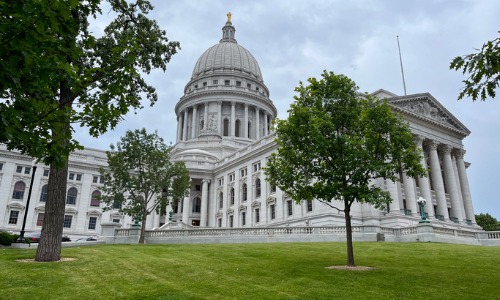Wisconsin Impeachment Demonstrates the Problem with Judicial Elections
 In April, the Wisconsin Supreme Court secured a liberal majority for the first time in 15 years with the election of Justice Janet Protasiewicz. The former Milwaukee County judge’s campaign received robust financial support from Democrats, setting the stage for a court that many hoped would revisit several contentious issues. However, this political shift has emphasized the downsides of injecting politics into judicial elections as Republicans mull her impeachment.
In April, the Wisconsin Supreme Court secured a liberal majority for the first time in 15 years with the election of Justice Janet Protasiewicz. The former Milwaukee County judge’s campaign received robust financial support from Democrats, setting the stage for a court that many hoped would revisit several contentious issues. However, this political shift has emphasized the downsides of injecting politics into judicial elections as Republicans mull her impeachment.
Just last month, the Wisconsin Democratic Party launched a $4 million effort to dissuade Republican lawmakers from pursuing impeachment of the newly elected Justice Protasiewicz. During her campaign, she criticized GOP-drawn electoral maps and voiced her support for abortion rights. Now, Republicans threaten impeachment if she declines to recuse herself from deliberating on two redistricting lawsuits filed during her first week on the bench. The GOP-controlled legislature has formally requested she withdraw from involvement in these cases.
Alicia Bannon, writing in the Brennan Center’s State Court Report, points out that “impeachment threats against state judges have become more common in recent years as state courts increasingly take on cases with high political salience. But a vote by Republicans to impeach Protasiewicz—months after her election, and in an effort to keep her from deciding a high-profile case that directly implicates their interests—would be unprecedented not just in Wisconsin but nationally.” These developments underscore the growing dangers of mixing politics with judicial elections—and the potential consequences for the independence and effectiveness of the judiciary.
These recent developments in Wisconsin highlight some of the challenges tied to judicial elections. When judges receive substantial financial support from specific interest groups or political parties, it can raise concerns about their impartiality and their capacity to make fair, unbiased decisions. This situation also impacts public confidence in the judiciary—a vital aspect of a healthy democracy.
Additionally, the prospect of impeachment and political pressures on judges—as seen in the case of Justice Protasiewicz—can have an inhibiting effect on the judiciary’s ability to uphold the rule of law. Judges should be able to render judgments based on the law and the Constitution, without fear of political retribution. When the threat of impeachment or other punitive measures hangs over judges due to political affiliations or positions, it undermines the checks and balances that are fundamental to the functioning of our democracy.
The Wisconsin situation illustrates why IAALS has long been a proponent of merit-based judicial selection rather than selection by election. IAALS’ O’Connor Judicial Selection Plan outlines four components of effective judicial selection designed to promote desirable core values in the judiciary, such as impartiality, competence, efficiency, transparency, accountability, and separation of politics from adjudication. According to the O’Connor Plan, developed in collaboration with Supreme Court Justice Sandra Day O’Connor (Ret.), a judicial selection process that aligns with best practices features the following components:
- Judicial Nominating Commissions. Judicial nominating commissions facilitate the first step in the selection process: identifying a list of highly qualified candidates for the governor to consider appointing. The commissions “must not be a political or partisan entity and should be representative of the community to be served by the judge.”
- Gubernatorial Appointment. The sitting governor then has a finite amount of time to select judges from the list of candidates. Although this decision may ultimately be impacted by partisan politics, the involvement of the commission ensures the governor is choosing from a slate of balanced and well-qualified candidates.
- Judicial Performance Evaluation. Once judges are selected, they should be held accountable through regular performance evaluations focused on assessing a judge’s “procedural fairness, demeanor, and knowledge,” not outcomes of specific cases. The results of these evaluations should be disseminated to the public regularly.
- Retention Elections. Based on this feedback and data about judges’ job performance, voters decide whether to retain appointed judges. This approach aims to avoid contested, partisan elections while still giving citizens a say in who serves on the bench and an opportunity to remove judges who are not meeting performance standards.
Although states take different approaches to judicial selection and retention, the developments in Wisconsin underscore just how vital it is to sever partisanship from the selection of judges. Regardless of the judicial selection method in place in a state, it is imperative that the selection process “produce judges and court systems that foster and deserve public trust and confidence.” (See IAALS’ Cornerstones of State Judicial Selection)



